Solar Gadgets
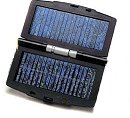
A solar cell phone charger is among the most popular solar gadgets, especially in developing countries.
There are approximately five billion cellular subscriptions in the world with the fastest growing markets being developing countries.
Landlines represent about 1.3 billion subscriptions but cell phone growth has exploded in those areas where populations (1.6 billion) do not have reliable access to landlines or electricity.
There is either no connection to a power grid or poor utility systems. In these areas, cell phones have become essential tools for economic growth as they're relied upon to access financial services and conduct transactions.
According to the World Bank, when cell phone usage increases by 10% in developing countries, there is a corresponding .8% growth in their economies. With the current rate of population growth among developing countries, the demand for electricity will double within ten years.
This is why there is an increasing demand for solar cell phone chargers, especially in African countries and in rural India, where cell phone usage has exploded to 1.5 billion subscribers.
Due to the poor access to electricity in these areas, it's common for subscribers to pay exorbitant prices to recharge their cell phones from such sources as diesel generators or car batteries. Solar gadgets such as an affordable solar cell phone charger are therefore in high demand.
When choosing a solar cell phone charger, there are important criteria to consider such as the time it takes for your solar charger to convert sunlight to electricity, and how long it takes to charge your cell phone.
The length of time it takes a solar cell phone charger to convert sunlight into electricity is related to the type and number of solar cells exposed to direct sunlight. How long the charger takes to charge your cell phone is related to watts output. The higher the watts - the faster your cell phone will charge.
Other features to consider are adapters. Solar cell phone chargers are not compatible with all cell phone brands, so ensure that any solar charger you purchase is compatible with your phones.
Sources: iea.org;ieeehtc.org;forbes.com
Solar Christmas Lights
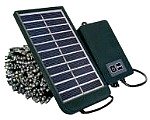
Solar Christmas lights are strings of bright white or multi-colored lights that use light emitting diodes.
The lights are connected to a rechargeable battery that is powered by a control panel of solar cells, and are activated at dusk with a light sensor.
The lights will stay lit for the evening provided that the solar cells are exposed to about 3 hours of direct sunlight during the day.
The major advantage of using solar Christmas lights is that you're not using electricity from the grid, which can consume as much as 100 watts to light a single strand of lights.
Other advantages include safety, no wiring, longer bulb life (100,000 hours), and the flexibility to display the lighting anywhere you want.
Overcast weather can prevent the solar cells from producing enough electricity to fully recharge the battery to power the lights.
As with all solar gadgets, the size and number of solar cells exposed to direct sunlight determines the amount of electricity generated.
Photo Credit: everbrightsolar.com
Solar Powered Attic Fan
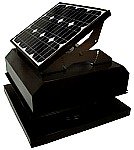
These solar gadgets save energy and protect roof structures by venting moisture and heat from attics.
Most attics use non-forced air (passive) vents meaning no fans are used to extract the air and moisture.
Until the invention of solar powered attic fans, electrical fans were rarely used due to the cost and because of safety concerns.
Removing heat and moisture from attics is important because it can cause mold, mildew and rot to insulation, ceiling joists and roof planks.
The accumulation of heat and moisture can also cause shingles to curl and deteriorate, and make elevated areas of the home uncomfortably hot.
In the winter, accumulated attic heat can melt snow on the roof which then flows into the eaves and gutters where it refreezes into dams of ice.
Further melting then backs up under the shingles and facia damaging the insulation, drywall and creating fungal decay and mold.
A solar powered attic fan uses forced air (proactive) vents that are an efficient, cost effective, and a safe means of circulating fresh air into the attic while removing heat and moisture, which consequently increases the energy efficiency and value of your home.
Because these solar powered fans are so efficient, it's important to seal any openings between your living space and attic to ensure air is not being extracted from your living space.
A solar powered attic fan is simple to install. You can get one from a manufacturer or build your own with a kit. They should be located on the sections of your roof that receive the most sunlight.
Photo Credit: atticbreeze.net
Solar Car Battery Charger
A solar car battery charger is an economical, convenient and eco-friendly method for charging batteries.
A car battery can go "dead" if you don't use your vehicle for awhile.
Normally, your car charges your battery with a belt-driven alternator that is rotated by the engine to generate electricity to the battery.
If a vehicle is not being used, your battery should be removed and connected to a charger plugged into an electrical outlet.
You could also leave a battery in the vehicle and try to "boost" it with cables connected to a fully charged battery. This will start the engine so the alternator can recharge your battery.
A solar charger is another way to charge your battery.
A solar charger is connected to a battery to keep it charged while not in use.
A panel is placed on the dash or outside the vehicle (if the panel is weather proofed) to receive sunlight. Free electrons are captured by the panel and converted into electricity.
The panel then sends this electricity through cables connected to your battery or through a cable plugged into the cigarette lighter.
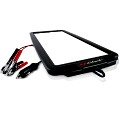 There are numerous makes and models of solar car battery chargers.
There are numerous makes and models of solar car battery chargers.
The best models will not overcharge or allow for loss of power (keeps it "topped-up").
Solar chargers are an inexpensive, convenient and a safe way to maintain and extend the life of a battery. Especially if you can't find, or want to avoid, plugging into an electricity grid.
Most of these solar chargers require direct sunlight to be effective and the size of the panel or number of solar cells determines how quickly your battery can be recharged.
Sources: corp.att.com; sunsei.com

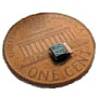
|
| World's smallest solar sensor. |
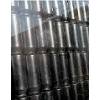
|
| Heating your home with aluminum cans. |
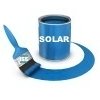
|
| Outdoor paint collects solar energy and makes electricity. |



